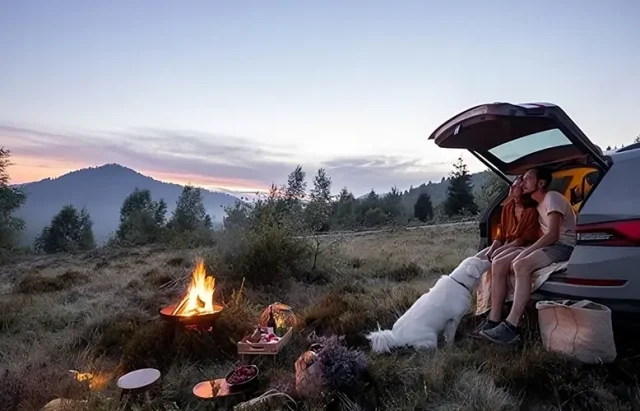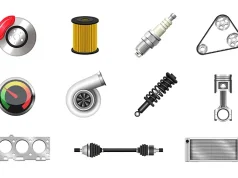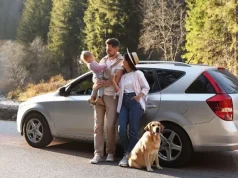
Even when temperatures drop when landscapes are covered in snow, winter has a special allure that entices adventurers to the great outdoors. For those looking for privacy, beautiful views, and the warmth of a campfire in the frigid air, car camping in the wintertime offers an exhilarating experience. However, a safe and pleasurable winter camping trip depends on careful planning. Here is a detailed list of what to carry to make the most of a winter vehicle camping trip.
What To Carry To Make The Most Of A Winter Vehicle Camping Trip
Coats and Jackets
Using layers is your best buddy if you’re camping in the winter. Include thermal undergarments, fleece or down coats, wind- and waterproof outer layers, gloves, scarves, and beanies in your luggage. Remember to pack extra socks and a solid pair of insulated winter boots to keep the feet warm and dry.
Sleeping Equipment
Invest in a high-quality sleeping bag for cold climates with a comfort rating corresponding to anticipated temperatures. In addition to increasing comfort, an insulating sleeping pad will serve as a barrier between you and the chilly ground. Consider bringing only a few extra blankets for more comfort.
Battery operated heated blanket
Winter car camping provides a unique opportunity to explore the tranquil beauty of snowy landscapes, but staying warm is essential to having a good time. A battery operated heated blanket that can be charged by car is one novel remedy that has become popular among winter campers.
Technology has the power to completely transform outdoor comfort, as demonstrated by the battery operated heated blanket from Zonlihome. The Zonli heated blanket promises to be your dependable travel companion for warmth and comfort, whether you’re setting out on a strenuous trip or just looking for a quiet moment amidst nature’s splendor.
Shelter and Warmth
Bring a tent that can endure snow and wind and has four seasons. Make sure the ventilation is enough to avoid condensation. Carry a camp stove with additional fuel to make hot food and drinks that keep you warm and nourished. Bring cookware, utensils, and a thermos to keep hot liquids warm.
Lighting
Since there are fewer daylight hours throughout the winter, bring headlamps, lanterns, and additional batteries to light up your campground. LEDs are a fantastic option because they use little power and create a lot of light.
First Aid Kit
Accidents happen, and injuries can worsen quickly in cold weather. Pack a complete first aid pack with supplies for treating hypothermia, frostbite, and other cold-related illnesses. Include any personal prescription prescriptions, medications, bandages, and antiseptics.
Navigational Aids
Winter landscapes can be confusing, especially while traveling uncharted areas. Bring a map, compass, GPS, or smartphone with offline maps to prevent getting lost.
Winter Recreational Gear
Bring some entertaining gear to make the most of this winter journey. Sleds and toboggans can add some playfulness to your journey, while snowshoes and running skis let you explore areas blanketed with snow.
Additional Supplies
Since winter weather can be unpredictable, bring extra supplies like firewood (if allowed), a multi-tool, duct tape, and a repair kit for any broken camping equipment.
Safety Essentials
In an emergency, communication is essential. Bring a fully charged cell phone and a power bank if you’re camping in a distant location without cell service. Consider bringing a satellite communicator or Personal Locator Beacon (PLB).
Personal stuff
Remember your stuff, such as prescription drugs, toiletries, sunscreen, and sunglasses. Sunburn might result from the sun’s strong reflection on the snow.
Trash bags
Remove all traces. Food scraps and all of your garbage should be packed out. In the cold, things break down more slowly, and wildlife may be drawn to discarded food.
Frequently Asked Questions
What advantages does automobile camping in the winter offer?
Winter car camping enables you to appreciate the calm of nature, participate in winter activities, and explore snowy landscapes without the need for bulky backpacking equipment. Your car offers comfort, protection, and quick supply access as a basecamp.
Are there any safety concerns when car camping in the winter?
Absolutely. Keep an eye on weather forecasts, keep communication devices like mobile devices and satellite communicators with you, be aware of the symptoms of hypothermia and frostbite, and be ready to leave if things get worse. Adherence to the Leave No Trace principles has the most negligible environmental impact.
Are heated blankets powered by batteries safe to use?
Yes, the majority of battery operated heated blanket are built with safety features including overheat prevention and automatic shut-off systems. These features support safe usage by preventing any potential risks. Before you make a decision, check this guide for choosing a heated car blanket.
Can I go camping in the cold in a conventional tent?
In mild winter weather, a conventional tent might hold up, but it’s advised to use a four-season tent made to endure snow, wind, and lower temperatures. Four-season tents are built to withstand stricter weather and are more durable and insulated.
How Can I Be Safe Around A Campfire When Camping In The Winter?
Use a designated fire ring or pan and check your local campfire laws. Before departing, control the fire and ensure it is put out. Snow melting near the fire should be avoided because it can cause ground instability.
How can I keep the tent from condensing?
Select a tent with good ventilation and avoid entirely sealing it to reduce moisture. To promote airflow and lessen moisture buildup, leave ventilation holes open.





